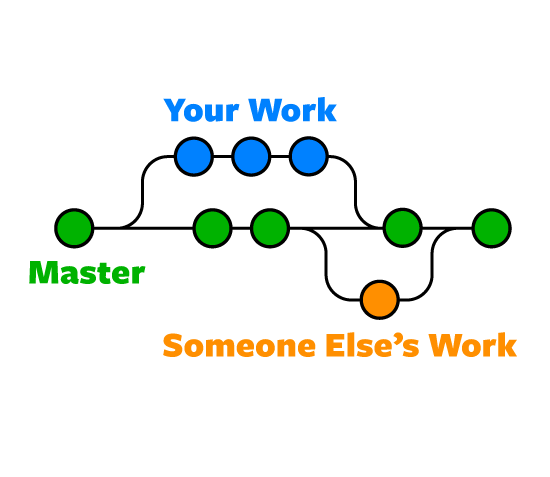
However, these terms are not restricted to Git repositories. Generally, upstream is from where you clone the repository, and downstream is any project that integrates your work with other works. The term upstream and downstream refers to the repository.

merge is set, when your are pushing the " upstream " branch.Īlso, what is upstream and downstream in git? pushing " upstream " means that your current branch B has remote/B has its upstream branch. Ie: when pulling to B, git wont know what branch to pull.
#CREATE NEW BRANCH FROM MASTER GIT HOW TO#
We learned how to create a new branch in a lot of different scenarios.Merge isnt set, when your are pushing the " current " branch. A new branch can be based on any commit, any tag, or any other branch. Git Checkout will also take us to the newly created branch with a single command but with Git Branch we also need to use Git Switch or Git Checkout to switch to the new branch. Branches can be created using the Git Branch command or the Git Checkout command. $ git push -u Summaryīranches are a very useful tool in Git as they give developers the freedom to work on new features without worrying about affecting the rest of the project. We need to use the Git Push command with the -u flag to do this. This will make the remote branch an Upstream Branch for our local branch. We can also create a new branch in our remote repository by pushing an existing local branch. $ git branch -track $ git checkout -track -b A New Branch in the Remote Repository This also makes it very easy to run Git Push and Git Pull commands for these two branches easier. The remote branch is called the Upstream Branch of our local branch and creates a tracking connection between the two. We will need this Remote Tracking Branch to create a new local branch based on the remote branch. Whenever we fetch from the remote repository, a Remote Tracking Branch is created that tracks changes of the remote branch. $ git branch $ git checkout -b A New Branch from a Remote BranchĪ Remote Branch is a branch that exists in the remote repository. Run the Git Branch or the Git Checkout command with the name of the existing branch to create a new branch based on it. Use the Git branch command with the -a flag to view all the branches present in the repository. We need the existing branch's name to do this. We can also create a new branch from the tip of an existing branch. $ git branch $ git checkout -b A New Branch from an Existing Branch Git Checkout will make this new branch our current working branch. Next, we can use either Git Branch or Git Checkout to create a new branch based on that tag. To view the tag names we can use the Git Tag command. We will need the name of the tag to create a new branch based on it. In most cases, tags are used to mark release versions of our project like v1.1, v1.2, etc. Tags are used to mark specific points in the history of our project. $ git checkout -b A New Branch from a Tag


We can also use the Git Checkout command to create and move to that branch with a single command. Git will need the hash of that commit to create a new branch based on it. $ git checkout -b A New Branch from a CommitĪ branch can also be created based on some other previous commit point. Use the -b flag with the command to accomplish this. We can use the Git Checkout command to create the new branch and also switch to that branch. We can use the Git Checkout command or the Git Switch command in the future to switch to this new branch. To create a new branch based on the HEAD we can use the following Git Branch command. It points to the most recent commit of our current branch. The HEAD is a pointer to our currently checked-out branch. Let's learn how to use them for different scenarios. The difference between them is that Git Branch will simply create a new branch whereas Git Checkout will create a new branch and also move our HEAD to the branch(we will be checked out on the newly created branch). Let's learn how to create branches in Git.īranches in Git can be created using two different commands - Git Branch and Git Checkout. These branches can then be merged with each other or with the master branch. They provide an independent workspace for developers where they can experiment with things and build new features without worrying about corrupting the rest of the project. Branches are an important part of any Git workflow. A branch is a pointer to one of the commits in our repository.


 0 kommentar(er)
0 kommentar(er)
